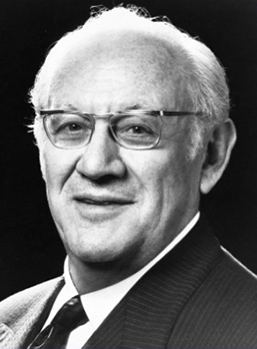
Dr. Sackler was born and raised in Brooklyn and he earned his medical degree at New York University. In the 1930s, he worked in the pharmaceutical industry and, in 1942, joined William Douglas McAdams—at the time a small, four-person agency. He subsequently acquired the agency and so began a leadership career that profoundly influenced medical advertising.
In the late 1940s and 1950s, Rx companies were not marketing-oriented. They had small field forces and lacked extensive marketing resources. At this time, however, scientific breakthroughs in steroids, antibiotics, antihistamines, oral hypoglycemics, and psychotropics were revolutionizing medicine and creating a highly competitive market for brand-name prescription drugs. Dr. Sackler saw the important role nonpersonal selling could play in this environment and became an advocate for the full-blown marketing programs (field force plus multimedia promotional activities) employed today.
He proved his point with the work McAdams did for Pfizer—a chemical company with a new antibiotic, but without the linkage old-line Rx companies like Lilly, Wyeth, and Squibb had with the medical profession. The product was Terramycin and Dr. Sackler helped Pfizer become a major player in prescription drugs with innovative, accurate advertising and promotion.
A landmark event was the appearance in JAMA of a multipage insert from Pfizer—a self-contained house organ, Spectrum, carrying ads on Pfizer products. Other innovations followed across a range of promotional techniques including field force materials. It can be said that Dr. Sackler helped shape pharmaceutical promotion as we know it today (he even experimented with medical radio and TV in the 1950s), as well as established the role of communications and promotional programs in pharmaceutical marketing.
Dr. Sackler was a psychiatrist who published 140 scientific papers on neuroendocrinology, psychiatry, and experimental medicine. His experience in those fields enabled him to position different indications for Roche’s Librium and Valium—to distinguish for the physician the complexities of anxiety and psychic tension. Accordingly, Valium became the first $100 million drug, a then staggering sales figure. He developed a newspaper house organ called Scope for Upjohn. In 1960, based on this model, he began publishing Medical Tribune, which, in time, became a major scientific publication reaching over a million physicians each week in 20 countries.
The scope of Dr. Sackler’s philanthropic endeavors is impressive. His name is associated with a wide range of scientific institutions: Sackler School of Medicine in Tel Aviv University, Sackler Institute of Graduate Biomedical Science, NYU; Arthur M. Sackler Center for Health Communications at Tufts University.
In 1950, Dr. Sackler started collecting Asian art; subsequently, he accumulated one of the largest private collections in the world. He made contributions to a number of art galleries and institutions such as: Arthur M. Sackler Gallery (Early Stone Age sculpture) at the Metropolitan Museum of Art, New York; Sackler Laboratories of Art History and Archeology at Columbia University; Arthur M. Sackler Gallery at Princeton Art Museum, Princeton University; Sackler Wing at Metropolitan Museum of Art, New York; Arthur M. Sackler Museum at Harvard University; Arthur M. Sackler Museum at Peking University, People’s Republic of China; Arthur M. Sackler Gallery at the Smithsonian Institute, The Mall, Washington, DC.
In his later years, he had stepped back from day-to-day operations at McAdams, but he was still active with the agency and Medical Tribune when he died in 1987.